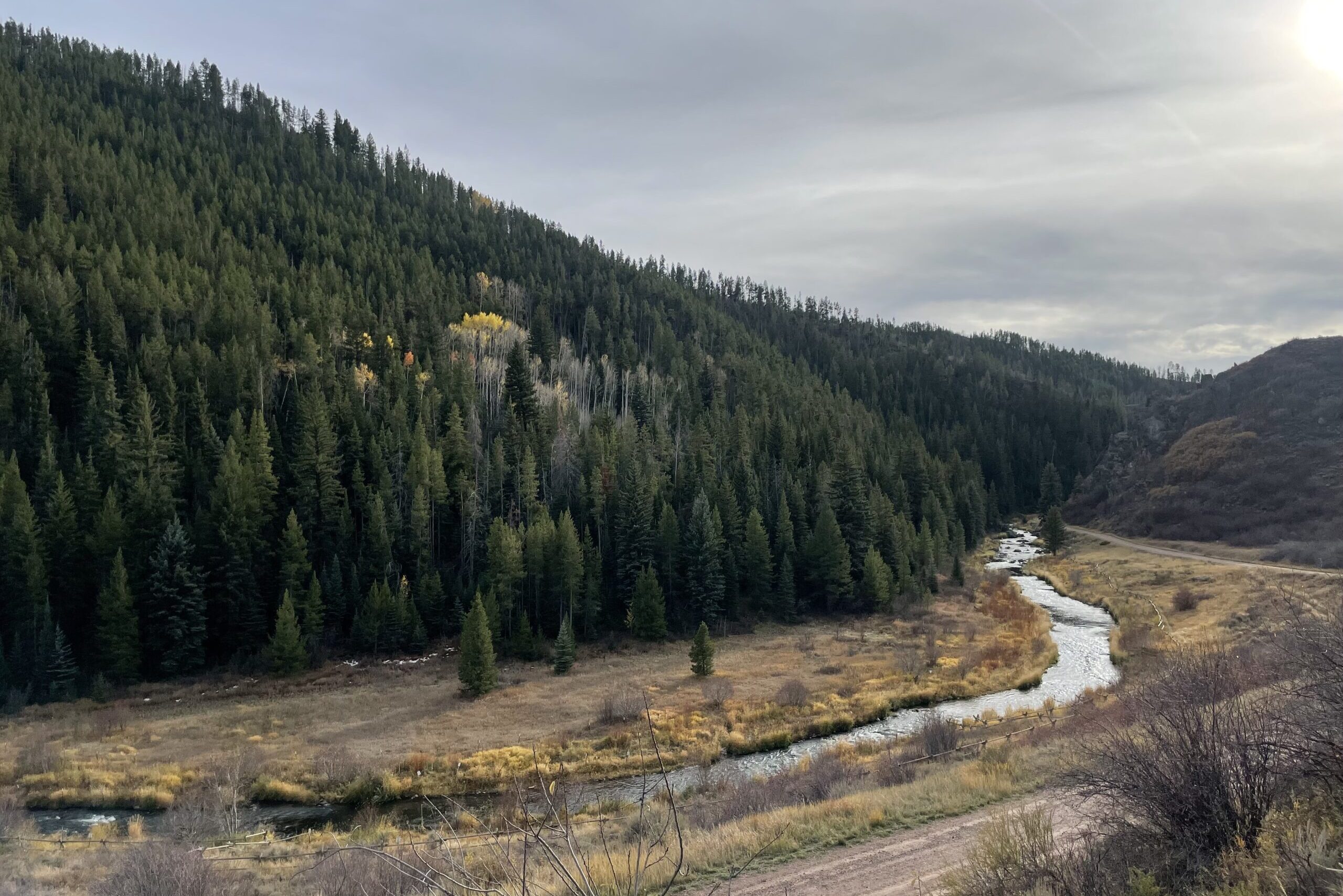
The state has closed a heavily fished stretch of the Yampa River south of Steamboat Springs in an emergency move to protect the river’s health and fish from low streamflows.
The mandatory closure, once rare, has become more common in recent years as decades of climate change-fueled drought continues to plague the West and the Colorado River Basin. The Yampa River feeds the Colorado River, which supplies water to 40 million people across the West.
The fishing closure covers about a half-mile section of the Yampa River downstream of Stagecoach Reservoir. In 2021, the same stretch of the river was closed from late May until November. Colorado Parks and Wildlife aquatic biologist Billy Atkinson said the section has cool, clear water released from the lake that attracts a lot of fishing.
Atkinson said water releases from Stagecoach would drop to 15 percent of what’s normal for this time of year because of how little water is flowing into the reservoir. He said Stagecoach was down about 12 feet going into the winter of 2021, which he said is about three times lower than normal.
Not enough snow collected in the Yampa River Basin to greatly improve streamflows or water supplies this year. Snowpack numbers climbed to above-average in early January but dropped and stayed below average through May. Recent snowstorms improved snowpack conditions, but Atkinson said years of intense drought has dried out the soil. As the snow melts, the soil takes much of the water before it reaches streams and reservoirs.
“It’s like you have one massive flower pot that hasn’t been watered in a long time,” Atkinson said. “As the snow melts, that pot of vegetation is sucking up the water.”
If the amount of water flowing into Stagecoach Reservoir is low, federal rules limit the amount of water that can be released from the reservoir. It’s a similar story at many reservoirs in the Colorado River system, including Lake Powell and Lake Mead, which are the largest reservoirs in the U.S. and have both hit record-low levels in recent months.
With so little water flowing out of Stagecoach Reservoir and into the Yampa River, Atkinson said the fish start to stack up and concentrate in low pools of water. That leaves the fish vulnerable to injury, starvation, disease and deadly stress if caught and released by an angler.
The state advertises this stretch of the Yampa River as one of the best places for catch-and-release fishing. It’s also stocked with large numbers of rainbow trout due to a high-profile, 20-year research project on a species of the fish that are more resistant to a disease that has wiped out populations of the fish across the state.
“Now we have more wild reproducing rainbow trout here than in any other place in the state,” Atkinson said. “That makes this population very valuable from a conservation standpoint. So we take these extra measures to protect that resource.”
Atkinson said a mandatory closure like this was "very rare" until recently. He said the drought means farmers and ranchers who tap the Yampa for irrigation have to use more water than they used to, which also contributes to the drop in the river's flow. He said that warm winds and dust storms also sap the snowpack of its moisture.
Climate change has forced Colorado Parks and Wildlife to use river closures more frequently as a management tool, especially as Colorado’s population grows and more people are spending time recreating at popular spots like the Yampa.
“These resources are seeing a lot more use than they did 10 or five years ago,” Atkinson said. “Whether it’s trails, whether it’s on national forest wilderness areas or through sections of town that have public fishing reaches. It’s everywhere.”
More about the Colorado River
- The most endangered river: A conservation group considers the Colorado River the epicenter of the nation’s water and climate crisis.
- Lake Powell dangerously low: As the reservoir dries up, there’s growing concern about the future of hydropower production.
- What happens if the river keeps drying up: It could trigger a chain-reaction of legal wrangling that could lead to some water users being cut off from the river.
- Tribes fight for inclusion: Leaders of native tribes who depend on the river say a century-old agreement is fueling water inequalities.
- Where’s the water going?: Much of it gets absorbed by soil baked dry by hotter temperatures due to climate change.









